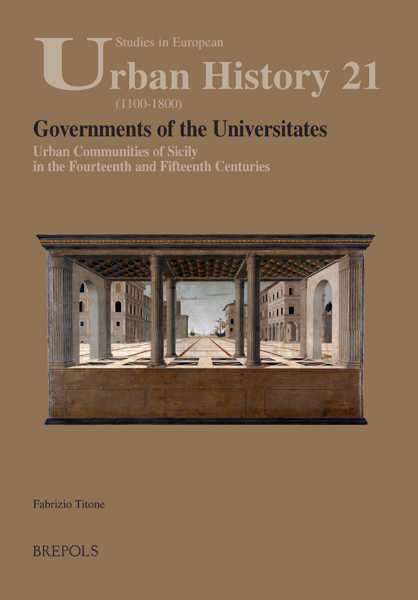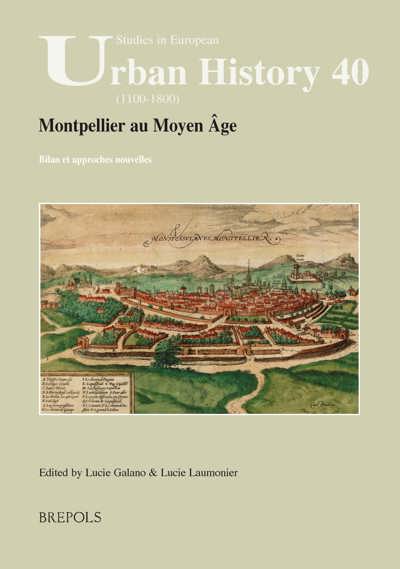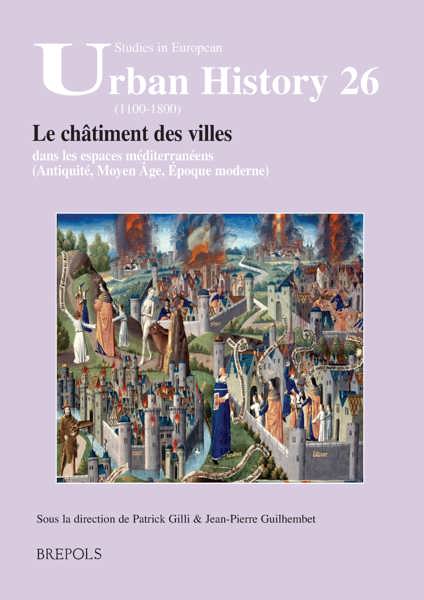
- Pages: 284 p.
- Size:178 x 254 mm
- Illustrations:22 b/w, 5 col., 7 tables b/w.
- Language(s):English, Latin
- Publication Year:2019
- € 100,00 EXCL. VAT RETAIL PRICE
- ISBN: 978-2-503-55576-8
- Hardback
- Available
- € 100,00 EXCL. VAT RETAIL PRICE
- ISBN: 978-2-503-56489-0
- E-book
- Available
…an exceptional work showing sustained effort and dedication to research." (Maria Crăciun, senior lecturer, Babeș-Bolyai University).
Ágnes Flóra studied history and art history in Cluj-Napoca (Romania), and then followed an MA training in medieval studies at the Central European University in Budapest, where she defended her PhD thesis in 2014. She currently works at the Romanian National Archives in Cluj. Her major field of interest is medieval and early modern urban history, development of urban governments, formation of elites and urban identity.
This monograph entails a comparative study of two early modern urban centers in Transylvania: Cluj (Kolozsvár, Klausenburg) and Sibiu (Nagyszeben, Hermannstadt). It develops a new perspective on urban history in Transylvania, by filling the recent historiographical lacuna on early modern urban elites. This book attempts to combine traditional and modern research methods, by analyzing and comparing a large volume of unpublished data along three research lines. First, the historical background within which of the town elites in Cluj and Sibiu monopolized power are analyzed, including the development of town autonomy and governmental systems, the legal background of urban leadership, its continuity and the conditions under which the political urban elite acted in each town. Secondly, a thorough archontological and prosopographical research, with a special focus on marriage strategies and professional competence leads to a socio-political characterization of the elites of Cluj and Sibiu. Finally, an attempt is made to provide insight into the representation and self-fashioning of these elites.
The manuscript has three main chapters, an introductory chapter, conclusions, bibliography and index of names.
The introductory chapter starts with the definitions of terms used in the text along with a short review of the elite theories with references to Max Weber, Norbert Elias, Gaetano Mosca or Vilfredo Pareto. This part is followed by the presentation of the aims and of the methodology pursued during the research. The presentation of the sources was split into two categories: unpublished primary sources and edited documents. Subsequently, the historiographical traditions on the topic - both in Hungary/Romania and international - are discussed.
The first main chapter is titled 'Respublica – res publica' and it is structured on three subchapters and thirteen sub-sub chapters. The first section (1.1.) is dedicated to the legal and institutional framework within which the urban elites of Cluj and Sibiu operated. The main objective of this section is to acquaint the readers with the beginnings of urban government and autonomy in the two towns in order to discuss the whole process of elite formation from the medieval period until the early modern. I have tried here to cutback some erroneously interpreted historical facts that has been reproduced time and again in scholarly works without any constructive criticism. A second section explores the structures of the town governments in the sixteenth century (1.2.), the history of the main urban offices and their legal context. A third section ends this chapter by having a closer look on the forces that might have interfered with the process of elite formation or disturbed it. Following Karen Lambrecht’s theory, elite formation is studied in relation to the court, the Church, the Reformation movements, university and multi-ethnicity. This part gives a deeper insight on the political, religious and ethnic realities of the region in the sixteenth century.
The second main chapter ('Magistri rei publicae') focuses on the archontological and propographical research on the urban elites. First, the legal, moral and material criteria of eligibility in public offices are discussed. Presenting several case studies, the second part makes a statistical and analytical presentation of the career building and power concentration in a comparative way. The following two subchapters investigate the 'cursus honorum' (the advancement of public office-holders within the ranks of the town council) and the networking strategies of the local elites (2.4.). This section leads to some intriguing aspects of power concentration within the local elites, family-networks and business relations are revealed. This main chapter concludes in an analytical subchapter dealing with the question whether the governing elites in Cluj and Sibiu can be categorized as a patrician communities or not (2.5).
The third part of this book ('Shaping self- and communal identity') is dedicated to the self-fashioning, and by that, to the communal individuation through the representation of the elites. Two main aspects are discussed here: the rituals and the ceremonies of the council election, constituted by a strong interaction between town and elites, and the erudite self-representation of the leaders through art and architecture.
The book is provided with a concluding chapter, a vast bibliography and an index of names.




